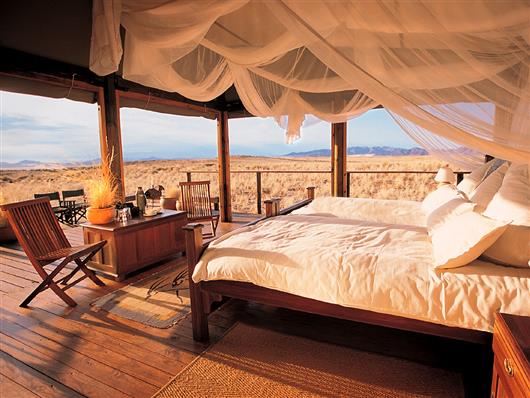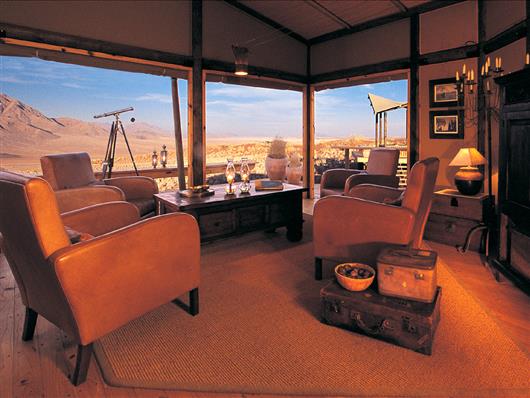

Wolwedans nestles into the dunes and is set against a backdrop of extraordinary natural beauty. Located in the heart of NamibRand Nature Reserve, Wolwedans camps provide the perfect base from which to explore the vast stretches of undisturbed nature.
The Dunes Lodge is perched on top of a dune plateau, overlooking panoramic vistas in all directions. The lodge's building style is a combination of wooden structures and canvas blinds, opening up to the desert. Each of the nine spacious chalets with en suite bathrooms has a private verandah, which connects you to vast stretches of untouched sand. Sleeping with the canvas blinds open is just like sleeping under the stars.
The main living area of the lodge consists of two lounges, a number of sundowner decks, a fireplace, a tea deck, a library, the wine cellar and two dining rooms. The lodge also has a swimming pool, which is suspended above the sand.
Accompanied by experienced guides, visitors are introduced to the many facets of the NamibRand Nature Reserve's desert habitat with its diverse fauna and flora - on foot, by vehicle or from the air. The classic programme - that is if you stay for two nights - would entail an afternoon drive on the day of arrival, followed by a full day-safari with picnic lunch en-route. Alternatively you can join one or two half-day excursions, perfect if you feel like lazing around for an afternoon, simply admiring the views and colours which change by the hour.
Four distinct habitats are found on the Reserve - dunes and sandy plains, inselbergs and mountains, gravel plains, and sand and gravel plains. The predominant large mammals on the Reserve are oryx gazelle and springbok. Other large mammals include kudu, Hartman's and Burchell's zebra, giraffe, klipspringer, steenbok, hartebeest and baboon. Predators include leopard, spotted and brown hyena, black-backed jackal, aardwolf, bat-eared fox, Cape fox, African wildcat, caracal and genet. To date 100 bird species have been identified, while work is still in progress on the inventory of rodents, reptiles, amphibians, invertebrates and plants.